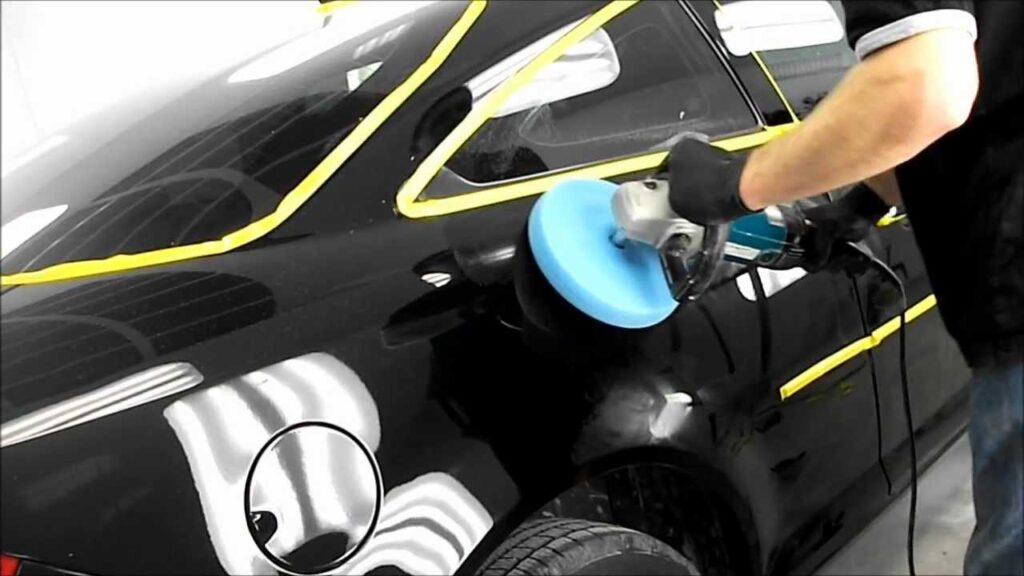Introduction
Have you ever wondered how some cars on the road maintain their showroom-like shine year after year? The secret lies in techniques like rubbing polishing—a game-changer for your car’s aesthetics. In this guide, we’ll break down how rubbing polishing can transform your car, making it look as good as new.
Understanding Rubbing Polishing
Definition and Process
Rubbing polishing involves the use of an abrasive compound called a rubbing compound. This compound removes imperfections on your car’s paint surface, such as scratches, oxidation and swirl marks.
The process starts with applying the compound to a buffing pad or polishing machine. As the pad moves across the surface, it smoothens the paint layer, revealing a glossy finish underneath.
Tools and Materials Used
To perform rubbing polishing, you’ll need:
- Rubbing Compounds: Available in different grades for varying levels of abrasiveness.
- Buffing Pads: Foam or microfiber pads for even application.
- Polishing Machines: Dual-action or rotary polishers for professional-level results.
The Benefits of Rubbing Polishing
Restores Faded Paint
Over time, your car’s paint can lose its vibrancy due to exposure to sunlight and pollution. Rubbing polishing helps restore its original color and depth.
Removes Minor Scratches
Small scratches and swirl marks can make your car look dull. Polishing smoothens these imperfections giving the paint a uniform appearance.
Improves Gloss and Shine
Nothing catches attention like a car with a mirror-like shine. Rubbing polishing enhances gloss making your vehicle look stunning under any light.
Enhances Durability of Paint
By removing contaminants and imperfections, polishing creates a smooth surface that’s easier to protect with wax or sealants, ensuring long-term durability.
When and Why You Should Opt for Rubbing Polishing
Signs Your Car Needs Polishing
- Dull and faded paint.
- Visible scratches and swirl marks.
- Uneven texture or rough patches on the paint.
Seasonal Considerations
Polishing before winter protects your car’s paint from harsh weather conditions while a spring polish removes accumulated grime and restores shine.
DIY vs. Professional Rubbing Polishing
Pros and Cons of DIY
- Pros: Cost-effective, satisfying for car enthusiasts.
- Cons: Risk of uneven application or paint damage without proper skills.
Advantages of Professional Services
Professionals like GlossZilla Car Detailing Studio use advanced tools and techniques to achieve flawless results. They can also assess the condition of your paint and recommend tailored solutions.
Tips for Maintaining Your Car’s Shine After Polishing
Regular Washing Techniques
Use a pH-balanced car shampoo and microfiber cloths to avoid scratching your paint.
Use of Wax and Sealants
Applying wax or sealants after polishing locks in the shine and protects against dirt and water.
Protecting Against Environmental Damage
Park in shaded areas and use a car cover to minimize exposure to UV rays, bird droppings, and acid rain.
Common Myths About Rubbing Polishing
Does It Thin Your Paint?
While rubbing polishing removes a microscopic layer of paint, it doesn’t thin the paint significantly when done correctly.
Is It Only for Old Cars?
Absolutely not! Even new cars can benefit from polishing to enhance their finish and remove minor imperfections.
Cost of Rubbing Polishing
Professional services range from Rs. 3,000 to Rs. 15,000 depending on your car’s size and condition.
How Rubbing Polishing Fits in Overall Car Detailing
Pair rubbing polishing with other services like waxing, ceramic coating or paint protection film for comprehensive car detailing. This combination not only improves aesthetics but also adds a protective layer to your vehicle.
Conclusion
Rubbing polishing isn’t just a cosmetic upgrade; it’s a transformative process that restores, enhances and protects your car’s paint. Whether you choose to DIY or go professional, this technique is worth the investment for maintaining your car’s beauty.
FAQs
-
What is the difference between rubbing and polishing?
Rubbing involves using abrasive compounds to remove imperfections while polishing focuses on enhancing gloss and smoothness. -
How often should I get my car polished?
Typically, every 6-12 months, depending on usage and environmental exposure. -
Can rubbing polishing remove deep scratches?
No, it’s effective for minor scratches but not deep ones that penetrate the paint layers. -
Is rubbing polishing safe for all car paints?
Yes, but always test a small area first or consult a professional to ensure compatibility. -
What precautions should I take during DIY polishing?
Use the correct compound and pad, avoid excessive pressure and work in small sections for consistent results.

